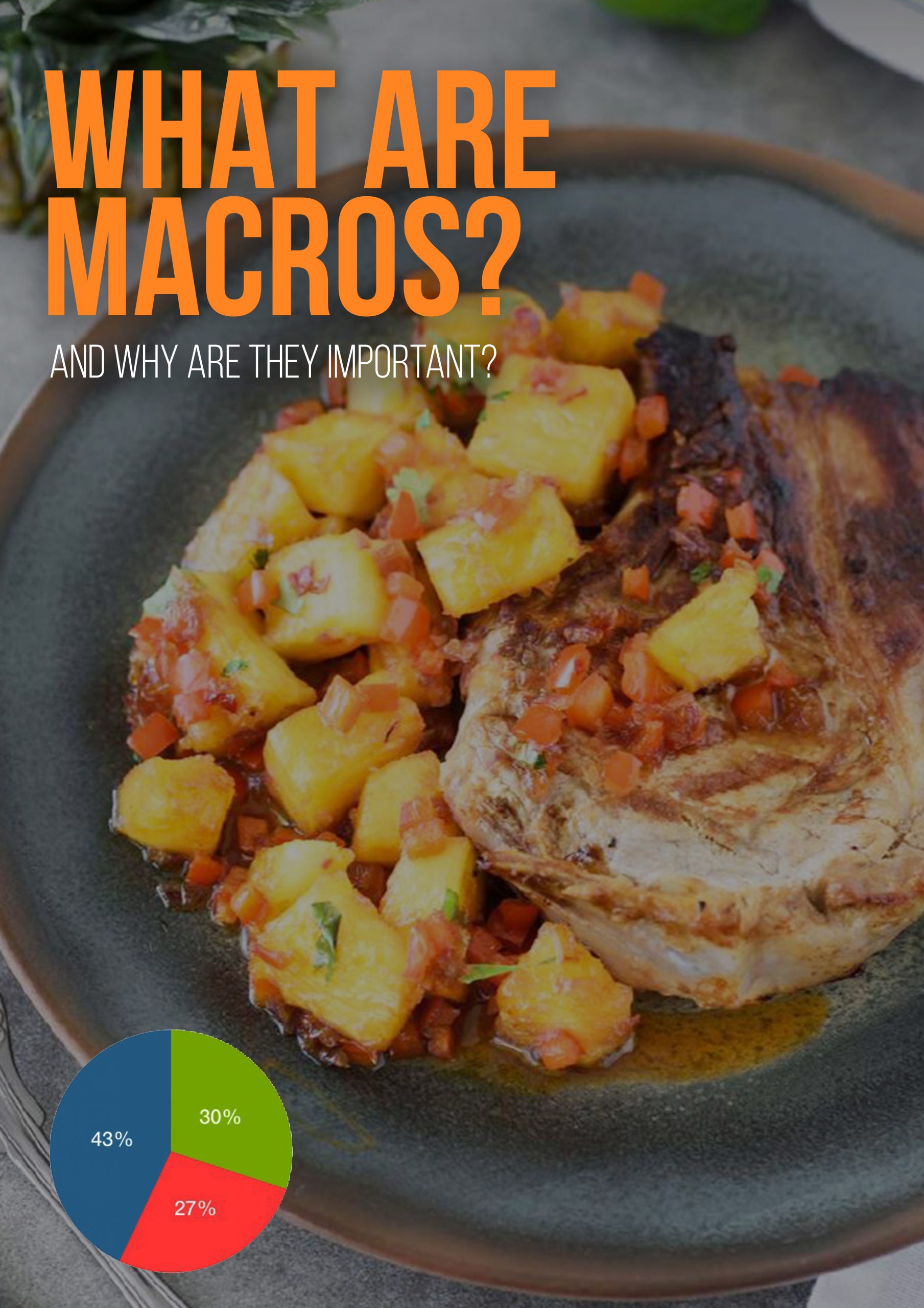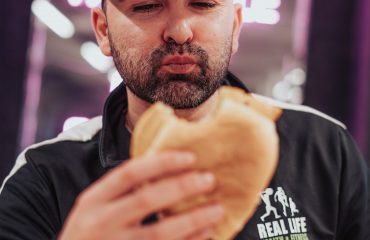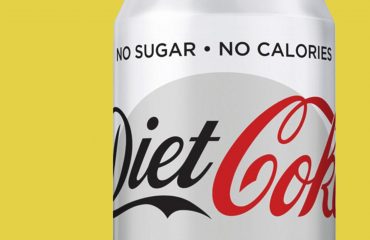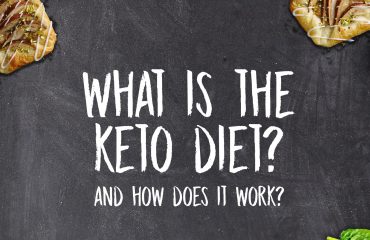What are macros? (macronutrients) Macros are the nutrients we need large amounts of for energy (calories).
The three macronutrients are protein, carbohydrates and fats; each has its own function in the body.
Each macronutrient has a different amount of energy per gram:
Protein has 4 calories per gram
Fat has 9 calories per
Carbohydrate has 4 calories per gram.
Protein
The function of protein is to repair, grow and build tissues; protein also protects muscle mass, particularly from losses when in a calorie deficit.
Protein is made up of amino acids, which are the building bricks of proteins. Some amino acids are essential, and some are non-essential; what this means is some amino acids can be made in the body (non-essential), while others must be consumed through diet (essential). Once in the body, amino acids will be put together like Lego bricks in different configurations to suit the required task.
Protein rich foods include meat, fish, egg, dairy, beans, lentils, and soy plus many more. It should be noted that animal sources generally contain all of the essential amino acids while plant-based sources need combining to get all of the essential aminos e.g., combining nuts and lentils.
Carbs
The function of carbohydrate is an energy source, eventually all carbohydrate in the body is broken down to glucose which is the body’s preferred method and source for energy especially for the brain and also for the muscles when exercising at high intensities.
The carbohydrate not used straight away as energy is stored in the muscles and/or liver to be used later, this stored form of glucose is called glycogen. Once glycogen stores are full if more carbs are consumed, they will be stored as fat to be used long term as energy.
Carbs are made of molecules with glucose always being at least one of these; known as simple carbs, they consist of 1 or 2 molecules and break down easily to be used quickly as energy. Complex carbs on the other hand consist of 3-1000 molecules and take more time to breakdown.
Fibre is another form of carbohydrate which is indigestible and therefore provides no energy but helps to keep intestines clear and healthy. Carbs with fibre are digested slower than those without e.g., brown rice, pasta and bread is digested slower than their white counterparts due to higher fibre content. Carbohydrate rich foods include honey, syrup, rice, pasta and potatoes.
Fat
The functions of fat are to be used as an energy source and form of energy storage, protect organs, hormone production and absorption, satiety (feeling of fullness) and maintenance of cells in the body.
Fats get a bad rep because of the high calorie content compared to carbs and protein however, they are an essential part of the diet especially in females.
There are 4 types of fats: monounsaturated, polyunsaturated, saturated and trans. Typically, “good fats” are mono and polyunsaturated which are in oily fish, avocados and nuts. “Intermediate fats” are saturated fats which are in red meat, cheese and coconut oil, while “bad fats” are trans and are in fried foods and takeaways.
Curious to learn more about nutrition? Check out our personal meal plan service or any of our online training programs and learn from our masters lever nutritionist.







You must be logged in to post a comment.